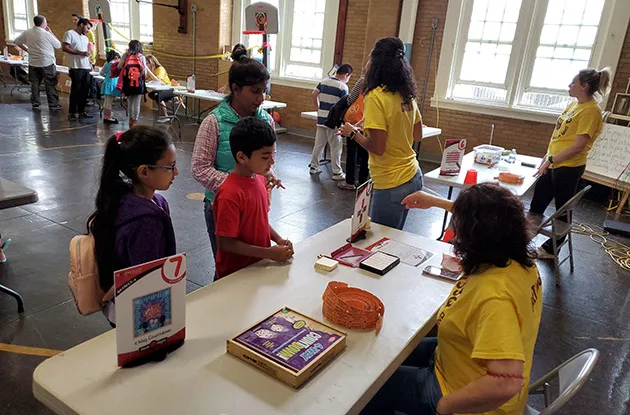New York State ranks near the bottom of the list when it comes to student participation in the School Breakfast Program, but we are making progress thanks to efforts in Brentwood, Long Island as well as Syracuse City Schools.
 ALBANY, NY — Anti-hunger advocates—including the New York School Nutrition Association, Hunger Solutions New York, and The American Dairy Association and Dairy Council—marked the end of National School Breakfast week by issuing the “State of the State on School Breakfast” in Albany on March 8. The result: New York is making progress—largely due to efforts in Brentwood, Long Island and Syracuse City Schools—but there’s still a long way to go.
ALBANY, NY — Anti-hunger advocates—including the New York School Nutrition Association, Hunger Solutions New York, and The American Dairy Association and Dairy Council—marked the end of National School Breakfast week by issuing the “State of the State on School Breakfast” in Albany on March 8. The result: New York is making progress—largely due to efforts in Brentwood, Long Island and Syracuse City Schools—but there’s still a long way to go.
In fact, according to a report released in January by the Food Resource and Action Center, the Empire State ranks near the bottom of the list (40th) when it comes to student participation in the School Breakfast Program. According to Linda Bopp, executive director of Hunger Solutions New York, low participation means missed meals for hungry children and missed dollars for New York State: “Increasing participation to 70 percent would lead to an additional 324,944 low-income children who eat breakfast each day, and New York State school districts would receive more than $79 million in additional child nutrition funding.”
Anti-hunger groups aren’t the only ones calling for New York to do a better job in feeding hungry children. In January, Governor Andrew Cuomo called out the need to increase participation in the School Breakfast Program as a means to alleviate food insecurity and announced the creation of an Anti-Hunger Task Force to help achieve this goal. Last week, U.S. Agriculture Secretary Tom Vilsack appeared at a forum on childhood hunger to support Breakfast in the Classroom programs as a way of reducing the stigma that can be associated with students having to get to school early to eat breakfast in the cafeteria.
According to the FRAC report, moving breakfast out of the cafeteria before school and making it a part of the school day is the most effective strategy for increasing participation. Several options can be adapted to fit the differing needs of age groups of students and of particular schools, including delivering breakfast to the classroom, or offering breakfast from carts in the hallway or after second period. Changing up the traditional before-the-bell cafeteria breakfast helps remove the perceived stigma of participating in school breakfast for low-income children (especially older children), and alleviates the problem of students missing breakfast in the cafeteria due to late arrivals or lack of time in the morning.
Breakfast does more than feed bodies. According to a study from Share Our Strength, kids who eat school breakfasts miss fewer days of school, do better in math and are more likely to graduate high school.
In particular, students who eat school breakfast:
- Score 17.5 percent higher on standardized math tests
- Attend 1.5 more days of school
- Are 20 percent more likely to graduate from high school
Also, a report issued in early March, The Wellness Impact: Enhancing Academic Success Through Healthy School Environments (click here to download the full report), reinforces the “learning connection”—the crucial link between quality nutrition, physical activity, and academic performance. The report was released by the GENYOUth Foundation, National Dairy Council, American College of Sports Medicine, and the American School Health Association.
Findings suggest:
- More than half (62%) of all teens say they do not eat breakfast every day of the week.
- Breakfast eaters have better attention and memory than breakfast skippers.
- Three-in-four high school students aren’t active for the recommended 60 minutes each day.
- Students who were more active during school performed better on standardized tests for reading, math and spelling.















